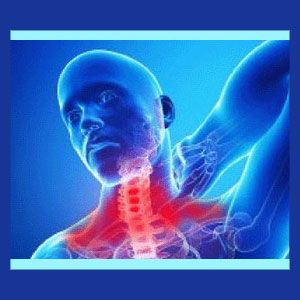
Text neck describes a condition wherein a person develops a variety of symptoms due to constant viewing of a mobile phone while the neck is flexed. Stiffness, neck pain, headaches and neurological symptoms are all common manifestations of mobile phone neck pain syndrome. This condition has become an epidemic problem among adolescents and young adults in recent years, primarily due to long hours spent on mobile social networking and messenger applications while standing and sitting.
Although the condition does not sound serious, it can actually lead to significant pain and even dire injury in rare cases. Consequences can be enacted on the neck muscles, upper back muscles, cervical spinal tissues and many of the nerves that are located in the various regions which interact with the neck, including the brachial plexus and cervical plexus.
This discussion delves into the growing problem of text neck syndrome, including its causes, symptoms and how the condition can be relieved without drastic medical intervention.
Text Neck Circumstances
Text neck is a condition of functional overuse and poor bodily ergonomics. People who suffer this painful syndrome do so by their own actions and bad habits; mainly looking downward at their mobile device for long periods of time while standing or sitting. The neck is held in a position of extended flexion for a very long time and can suffer a range of negative consequences due to overuse syndrome, more commonly known as RSI.
It is important to remember that the head is a very heavy burden and that this weight is exponentially increased when the head is not held centered over the body. When the neck flexed forward with a bent upper back, the new position of the head makes the anatomical load many times greater than when the head is held centered over the shoulders with the back straight. This causes strain and the development of various problematic conditions in the soft tissues of the neck and upper back and may even begin to influence the progressive development of the spine and surrounding skeletal formation of the chest, shoulders and upper ribs with time.
It is not the act of looking at a mobile device for an extended period of time which is inherently harmful (at least not to the neck), but instead, the position that most people assume when performing this action for an extended time frame, particularly when they are on the go and not able to sit comfortably and well-supported with the benefit of a device holder at eye level.
Neck Pain Mechanisms
Long periods of neck flexion (looking downward) can cause a diversity of negative consequences to the tissues of the cervical spinal region and the upper dorsal anatomy at large, including any or all of the following effects:
Soft tissues, like muscles, tendons and ligaments, can suffer acute strain or RSI development due to long periods of work in static and less-than-ideal conditions. Muscular imbalances can develop, causing one set of muscles to grow weak and lax, while the opposing antagonistic pairing grows especially strong and excessively tight.
Since the cervical spine is already disposed towards structural degeneration due to common use, continuous periods of neck flexion may contribute to the formation of arthritic changes in the spinal joints, the acceleration of degenerative disc disease and the formation of herniated discs. Additionally, the spinal curvatures might suffer transient or permanent alteration in form, including an exaggeration or loss in cervical lordosis, thoracic kyphosis and even the development of functional scoliosis in the cervical or cervicothoracic regions.
Even when the spinal anatomy does not suffer lasting injury or deterioration, temporary changes in curvature and vertebral canal alignment can cause the development of central or foraminal spinal stenosis, potentially creating the ideal circumstances for pinched nerves in the neck to occur.
Text Neck Symptomology
The usual symptoms of text neck are due to related soft tissue changes, rather than severe manifestations of disc and/or bone deterioration. These symptoms include tightness, tension and stiffness in the neck and resistance to straightening the posture to a more conventional and optimal positioning after long periods of flexion. This results in a progressive trend towards the demonstration of permanent forward head posture and an escalation of symptoms.
Neck pain may or may not be present, but it is likely to develop if the condition persists. Many patients also suffer cervicogenic headaches, facial pain, ear issues, vision issues or radiating symptoms in the shoulders, arms and/or hands unilaterally or bilaterally. These symptoms can all be caused by both muscular and neurological involvement in and around the spine.
Acute pain in the neck or head may occur occasionally and might even assume a chronic pattern in severe cases. Even when neck pain does not exist, but postural changes are noted, the person is increasingly disposed towards the possibility of injury from various mechanisms, including whiplash. The muscles will be less capable of defending the neck against hyperflexion and hyperextension, making grave trauma more likely to produce dire damage to the spine, rather than just the soft tissues of the greater neck region.
Text Neck Tips
It is easy to prevent and reverse text neck in most instances. All one need do is to elevate their mobile electronic device to eye level and take turns holding it with both hands in order to prevent strain on the arms and hands. Alternatively, it is ideal to utilize a device stand whenever possible, including on the go, or simply reduce the amount of time that you use your device. Some people circumvent texting neck by wearing virtual reality glasses that contain built-in device monitors. This solution can be very useful for some applications.
Remember that even working on a traditional computer can cause similarly painful problems in many people. This is why it is vital to setup your workstation ergonomically. Be sure to read our essays covering computer and desk job neck pain for details on how to avoid suffering when working in these posture-compromising roles.
Neck Pain > Neck Pain Causes > Text Neck






